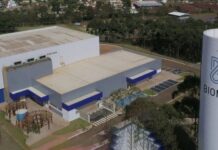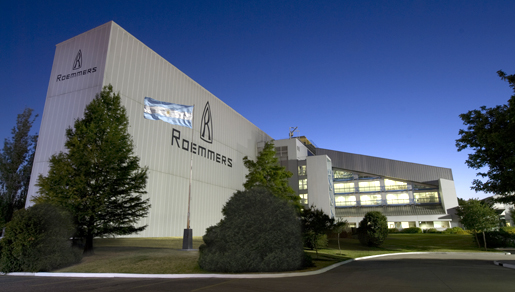El sábado 1 de marzo, la presidenta de la nación Cristina Fernández de Kirchner le dio apertura a la 132 Asamblea Legislativa, que marcó el punto de inicio a las sesiones legislativas ordinarias de 2014.
Durante las mismas habló sobre el proceso de reindustrialización del país, mencionó la apertura de más de 370 parques industriales y de miles de fábricas «que están generando valor agregado y sustitución de importaciones».
En el caso de la industria farmacéutica, Pharmabiz recopiló algunos de los emprendimientos de dicha naturaleza.
El nuevo parque industrial de Ezeiza dio lugar a desarrollos por parte de esta industria, encabezados por las nacionales Dromex y Novocap. Otra nueva planta fue la de Bria Pharma en el Parque Industrial Tigre, aunque dicho parque tiene una antigüedad de 40 años.
En el Parque Industrial Pilar, se está levantando una nueva unidad para el laboratorio Craveri; Gador montó la propia de hormonales también en Pilar y el laboratorio Elea puso la piedra fundamental en ese predio para dejar de lado su actual headquarter en el barrio de Devoto, aunque luego no avanzó con el proyecto.
También el polo farmacéutico ubicado en Villa Soldati tiene en marcha varios emprendimientos, entre ellos la nueva planta del laboratorio Montpellier, perteneciente al grupo Bagó.
Acuerdo de precios
Sobre el acuerdo recientemente firmado con la industria farmacéutica para retrotraer los precios de los medicamentos a diciembre de 2013 la presidenta de la nación dijo: «no solamente esperamos que se respete, sino que tienda a mejorarse, porque es un sector de inmensa rentabilidad, donde el Estado es el principal comprador con el 55% de las compras a partir del PAMI, de Salud Pública, etc». Ver video.
La primera mandataria hizo referencia también a un avance en materia de oncología. Sobre ello dijo: «el otro día se daba cuenta de una importante investigación en materia oncológica y se mencionaba así como al pasar a la agencia de investigaciones como si fuera dependiente de Marte».
Esa agencia, remarcó, «depende del Ministerio de Ciencia y Tecnología y se solventa con recursos de todos los argentinos».
En materia de gestión sanitaria «quiero darles algunos números», dijo Cristina Fernández al parlamento. «En el año 2003 el índice de mortalidad infantil era de 16.5 x 1000 mientras que en el 2013 fue de 11.1 x 1000».
En trasplantes de órganos la presidenta subrayó la cantidad de instituciones que están realizando este tipo de operaciones complejas. Se pasó de 8 a 20 hospitales en la actualidad, precisó.
La mandataria se refirió también a los casos de Chagas y a la complejidad de bajar estos vectores, a los planes de vacunación, a la incorporación de la vacuna para la Hepatitis A y a la ampliación del calendario a 16 vacunas.
Obras Sociales y datos per cápita
«Al haber más trabajo vuelven a tener también un impacto muy fuerte las obras sociales y vuelve a cubrirse una parte importante de la población no solamente por el sector público sino también por el sector de las obras sociales», dijo Cristina Fernández.
En su discurso, que comenzó a las 12 del mediodía y duró casi tres horas, aseguró «tenemos uno de los mejores sistemas de salud de América Latina por cobertura. Aumentamos en el 2001 la cobertura del 51.9% al 63.9%.«.
«Esto ha sido producto del crecimiento del trabajo, de las obras sociales, que también han crecido como ha crecido la cobertura a grupos vulnerables, por muchas leyes que han surgido de este parlamento», definió.
Dichas leyes son para dar mayor cobertura a gran parte de la población en materia de dolencias crónicas, «aunque a muchas prepagas esto no les gusta y a muchos sindicatos tampoco porque dicen que tienen que gastar mucha plata. Pero la salud es inversión, más que gasto», delineó.
La presidenta de la Nación se refirió también a la cantidad de médicos per cápita. «Tenemos una muy buena cantidad de médicos, aunque el problema es la distribución», dijo.
Tenemos 3.21 médicos por cada 1000 habitantes; Estados Unidos tiene 2.42; Brasil 1.76, Uruguay 3.74 y la Unión Europea tiene 3.33. Aunque en la Argentina, el problema es la localización, aseguró. Explicó que la mayoría de los médicos se asientan en las grandes ciudades y hay algunos pueblos en donde es muy difícil conseguir profesionales.
Cristina Fernández dijo que la Argentina tiene la cantidad de camas por habitante más alta de la región. Un total de 45 camas cada 10 mil habitantes. Detalló que Estados Unidos tiene 30; Brasil dispone de 23; Chile tiene 20; Uruguay mantiene 30; México 17; Perú 15 y Paraguay tan sólo 13.
Inversión estatal en salud
«El gasto público nacional en salud ha crecido exponencialmente desde 2003 llevándolo a casi u$s 20 mil millones. Somos el país de la región, incluido Estados Unidos, que más gasta en Salud Pública. Este gasto incluye, la Seguridad Social, incluye al PAMI», afirmó la presidenta.
Del gasto total de salud de la Argentina el 64.4% es público y el 35.6% proviene del sector privado. En Estados Unidos lo que aporta el Estado es el 48.2% y el 51.8% es privado.
En Uruguay en el Estado se origina el 65.3% de la inversión y el 34.7% es privado; en Brasil el 53% del gasto es privado y el 47% es de origen público.
 _______________________________________________________________________________________________
_______________________________________________________________________________________________
Bilingual version
Congress: prices, industry and more
Argentine president Cristina Fernández de Kirchneropened the 132nd assembly of the National Congress in Buenos Aires on Saturday (March 1), marking the start of the 2014 legislative sessions.
She spoke of the re-industrialization of the country, citing the opening of more than 370 industrial parks and the opening of thousands of factories that were “generating added-value and substituting imports.”
Pharmabiz has compiled a list of such ventures related to the pharmaceutical industry:
The new Ezeiza industrial park has given rise to several ventures, with national pharmaceutical companies Dromex and Novocap leading the way. Bria Pharma also opened a new plant in the Tigre industrial park although the park itself has been in existence for 40 years.
Work is underway at the Pilar industrial park to build a new site for Craveri. Gador has already opened its hormone facility at the same location. Elea also began preparing to move its headquarters there from the neighborhood of Devoto but didn’t move forward with the project.
Several ventures are underway at the pharmaceutical center in Villa Soldati, including a new plant for drugmaker Montpellier, part of the Bagó group.
Price agreements
The president cited the December 2013 agreement signed with the pharmaceutical industry to rollback medication prices and said: “not only do we hope this will be respected, but that it will be improved on, because this is a sector with huge profitability in which the state is the principal buyer, accounting for more than 55% of purchases through the public health system, and PAMI (the senior citizens’ health insurance agency), etc.”
The president also mentioned recent advances in oncology. She said: “the other day an important breakthrough in oncology was made public and the team of investigators behind it was mentioned in passing as if they were from Mars (when actually) they depend on the Ministry of Science and Technology and are financed by the resources of the Argentine people.”
The president said she “wanted to provide numbers” regarding health management and went on to say that the infant mortality rate had fallen from 16.5 per 1000 births in 2003 to 11.1 per 1,000 in 2013.
She also highlighted the number of institutions carrying out organ trasplants(up from eight to twenty) and referred to the battle against Chagas disease, the complexity in reducing vectors and vaccination plans, as well as the incorporation of the hepatitis A vaccine, increasing the vaccine calendar to 16.
Health insurance and statistics per capita
“Since more people are in work, trade union-run health insurance programs are beginning to have a strong impact again and a significant part of the population has medical cover once more, not only in the public sector but also though trade union-run health insurance,” the president said.
In an address of almost three hours, she said: “we have one of the best health systems in Latin America in terms of coverage. Since 2001, we have increased coverage from 51.9% to 63.9%.
“This is the result of increased employment and health insurance contributions. These, as well as medical cover for vulnerable groups have increased due to a great deal of legislation passed during this parliament”
Said legislation grants wider-ranging cover to a large part of the population with regards chronic illnesses “although many private health insurance providers and trade unions don’t like it because they say they have to spend a lot of money. But healthcare is an investment more than an expenditure,” the president said.
She also referred to the number of doctors per capita: “we have a very good quantity of doctors, although the problem is their distribution.”
We have 3.21 doctors for every 1000 inhabitants. The US has 2.42; Brazil 1.76, Uruguay 3.74 and the European Union 3.33. But in Argentina the problem is their location, she said, explaining that the majority of the doctors are based in the larger cities and that there are some towns where it is very difficult to get healthcare professionals.
She said that Argentina had the largest number of hospital beds per capita in the region – a total of 45 beds for every 10 thousand inhabitants compared with 30 in the US, 23 in Brazil, 20 in Chile, 30 in Mexico, 15 in Peru and only 13 in Paraguay.
State investment in health
“The national public expenditure on health has grown exponentially since 2003, reaching almost $20 billion. We spend more on public health than any other country in the region, including the US. This expenditure includes social security and senior citizens’ social security.
Of the total expenditure on health in Argentina, 64.4% is public and 35.6% comes from the private sector. In the US, the state contributes 48.2% and 51.8% is private. In Uruguay the figures are 65.3% and 34% and in Brazil 53% and 47% respectively.















